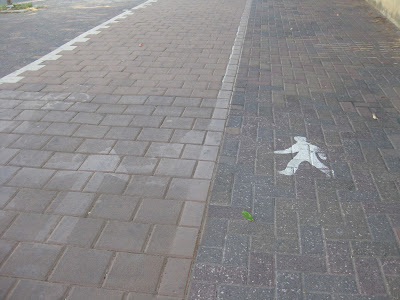No trip to Israel or Jerusalem is complete without being at the Western Wall - a unique place of prayer for jewish and non -jewish visitors. The wall , a fragment of the original Wall, is the only remnant of the Great Temple and therefore the most sacred structure to Jews who feel that the Divine Presence has not left the place with the destruction of the holy temple.
the golden Dome of the Rock in the background
the Wall seen from the main plaza
elderly orthodox jew walking along the main square
I haven't been at the Western Wall (also known as the Wailing Wall) in a long while, and that has bothered me.
So, a week before the arrival of December - last month of the year and the first month of winter, I finally decided to go to Jerusalem and visit the Wall, have some praying near the ancient rocks and insert a written wish in a crack between them ,absorb the spiritual atmosphere dominating the place, look around to see what's new or changed on the site, and take a few pictures.
Me (my head covered with a cap) praying.....
slips of paper with people's written wishes in the crevices of the wall
philipino women at the wall
Besides the massive crowds of visitors from all over the world, there are soldiers and policemen at the spot, to ensure security; also a lot of white plastic chairs for the elderly to sit and pray in comfort.
However, what immediately catches the eye is the separation between men and women, both at the entrance security Check, and at the Prayer site near the wall .
women's prayer section (see the greenish separating fence)
lots of white plastic chairs
women of all ages (girl, young female soldiers, elderly women).
I don't mind the segregation itself ( in crowded places like this one, it prevents opportunities of minor sexual harassment , and that's good). I do mind, though, the fact that the women's prayer section is smaller than that of the men's section. Why this inequality? In fact,during my visit (on a regular day, in the early afternoon hours), there were more women praying at the wall than men.
both prayer sections and the greenish fence between them
men's prayer section
People leaving the prayer site usually do so with the face to the wall, out of respect. It reminds me of our family female doctor who has once told me this: 'your father is a most remarkable person; he never leaves my office with the back to me'.
























































